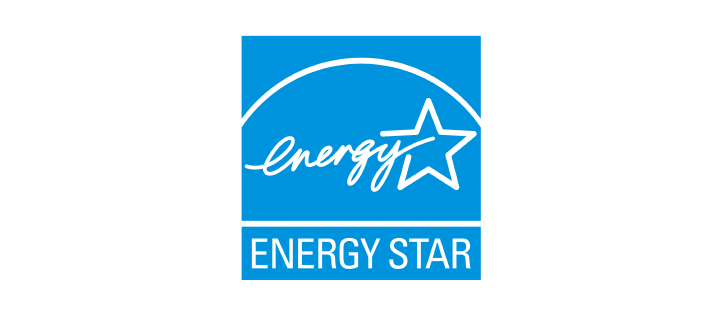ENERGY STAR – Voluntary Labeling Drives Innovation and Savings

ENERGY STAR – Voluntary Labeling Drives Innovation and Savings
Launched in 1992, ENERGY STAR is the among the most successful public-private partnerships in U.S. history. A collaboration between the federal government and some 16,000 private companies and organizations, it has helped drive technological advancement and commercialization of high-efficiency lighting, appliances, buildings and other products. In 2015 alone, the program saved consumers and businesses over $34 billion, with products in almost half of American households.
Run largely by the U.S. Environmental Protection Agency (EPA), ENERGY STAR is a voluntary labeling program that highlights products with strong efficiency performance. The iconic square blue label has become a universally known brand, recognized by more than 85 percent of the public, with consumers consistently ranking ENERGY STAR products higher than unlabeled products. The program’s success has led to its expansion from electronics and appliances to office equipment, lighting, new homes, commercial buildings and industrial plants.
What’s the impact?
- American households and businesses saved $430 billion on utility bills since 1992.
- 2.7 billion metric tons of greenhouse gas (GHG) emissions have been avoided since 1992.
- Americans purchased over 300 million ENERGY STAR certified products in 2015 across more than 70 product categories, for a cumulative total exceeding 5.5 billion products.
- Americans have saved $4.50 in lower utility bills for every $1 invested in energy efficiency through ENERGY STAR products.
How does EPA decide on the criteria for each ENERGY STAR label?
EPA establishes energy efficiency requirements and specifications for each product according to a set of overarching guiding principles. Qualified products must deliver the features and performance demanded by customers, and if they cost more than their conventional counterparts, consumers must be able to recover their investments through utility bill savings. The products must also employ energy efficiency technologies that are broadly available and offered by more than one manufacturer, among other requirements.
Revised periodically, the specifications are generally updated when the market share of ENERGY STAR products in a particular category exceeds fifty percent. As a result, both ENERGY STAR qualifications and levels of energy efficiency have improved over the years. For example, an ENERGY STAR clothes washer consumes roughly 70 percent less energy and 75 percent less water today than a standard washer made twenty years ago.
Are there different levels of ENERGY STAR qualifications?
EPA recently developed an ENERGY STAR Most Efficient designation, which recognizes a superlative level of efficiency among products that qualify for the label. These products represent the cutting edge in energy efficiency technologies in a variety of categories.
Who has adopted ENERGY STAR products and buildings, or formed partnerships with the program?
- Millions of households and businesses have purchased ENERGY STAR qualified products and homes to save energy and money.
- Thousands of major corporations and other private companies act as both suppliers and consumers of qualified products
- Many utilities across the country partner with and rely upon ENERGY STAR ratings for homes, buildings, and appliances.
- Federal agencies are required to buy only ENERGY STAR labeled products in certain categories, as directed by the Energy Policy Act of 2005. This significantly reduces federal spending.
- Several cities and states use the ENERGY STAR Portfolio Manager system as the basis for the required rating and benchmarking of the energy performance of commercial and multifamily buildings.
Not just for appliances and electronics – ENERGY STAR homes and buildings save too:
More than 82,000 new homes have earned the ENERGY STAR label in 2015, bringing the total number of certified new homes to over 1.6 million. For individuals living in affordable housing, the savings make a difference. Since 2001, ENERGY STAR’s partnership with Houston Habitat for Humanity has helped build 640 new efficient homes that increase owners’ disposable income by $3,000 each year.
And the savings don’t stop with the residential sector. Among the 450,000 commercial buildings benchmarked using ENERGY STAR Portfolio Manager®, more than 27,000 have earned ENERGY STAR certification. ENERGY STAR-certified commercial buildings have saved over $3.8 billion in energy costs between 1995 and 2015. The program’s Portfolio Manager helped more than 450,000 properties achieve an average of 2.4 percent annual savings by 2015. K-12 schools are one of the largest groups of beneficiaries – with over 68,750 school buildings utilizing Portfolio Manager to save about $140,000 (per 800,000 square foot school district) on utility bills per year.
Key Sources: ENERGY STAR Overview of 2015 Accomplishments; ENERGY STAR Partner Organizations; ENERGY STAR Facts and Stats
STAY EMPOWERED
Help the Alliance advocate for policies to use energy more efficiently – supporting job creation, reduced emissions, and lower costs. Contact your member of Congress.
Energy efficiency is smart, nonpartisan, and practical. So are we. Our strength comes from an unparalleled group of Alliance Associates working collaboratively under the Alliance umbrella to pave the way for energy efficiency gains.
The power of efficiency is in your hands. Supporting the Alliance means supporting a vision for using energy more productively to achieve economic growth, a cleaner environment, and greater energy security, affordability, and reliability.



